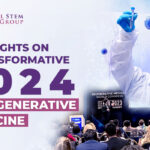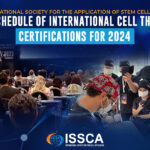The entire field of orthopedics is looking for new regenerative technology that can save more patients more safely. Currently there are two contenders: Platelet-Rich Plasma and Stem Cell.
While PRP is the safest of the two, it’s really hard to dismiss the remarkable capabilities of stem cell therapy. In fact, I believe it’s the future of regenerative medicine. But not at the level it’s playing right now. Which is a totally different discussion we’ll save for another day.
The thing is… there are potential harm with stem cells. And unlike PRP, stem cell’s constituents are man-made, so things can go wrong. We’ll discuss the potential dark side of this therapy later in this article. However, I feel it’s important to highlight how good a treatment stem cell therapy is.
Quick Overview: Stem Cell Vs Platelet-Rich Plasma
Platelet-Rich Plasma is like water and nutrients that help restore (and sometimes accelerate) your body’s EXISTING healing mechanism. If your body is stuck with its healing, PRP can help. It releases growth factors and cytokines to kick start the healing. Stem cells on the other hand is not used to enhance healing, but to create new solutions to healing challenges. So it’s more for tissues that are totally lost.
Stem Cell Vs Platelet-Rich Plasma
With me? Before we proceed, let’s look at a little background of stem cells. We’ll stick to orthopedics for the sake of simplicity.
Orthopedic Stem Cell Therapy
Stem cells are naturally found in the human body and they are a fundamental part of the body’s normal healing process. Stem cells are known as ‘raw potential’ as they can be converted into any cell that the body needs. The body utilizes stem cells to substitute damaged and/or injured cells. This process allows natural healing and repair of the injured or damaged cells.
As the body gets older the amount of natural reserved stem cells starts to decline, which explains why the healing process is slower as the body gets older. Stem cell therapy resolves this shortage by injecting supplementary stem cells into the injured/damaged area of the body, which triggers the cell replacement, natural healing, and pain relief.
Stem cell therapy is a simple and quick procedure, taking about 15 minutes. Pain discomfort is often felt immediately, with the majority people reporting a significant improvement within one to two days.
With stem cell therapy the patient does not have to have any type of surgical procedure, local or general or downtime. Most of the patients experience a complete restoration of the damaged/ injured ligaments, tendons, and cartilage within about in 28 days. Stem cell therapy has been proven to be complexly safe, with no side effects reported in the US or in Europe.
The Difference Between Stem Cell Therapy and Platelet-Rich Plasma (PRP) Therapy
Often times, stem cell therapy and PRP can be confused because they have a lot in common during the healing process. The easiest way to tell the difference between the two, is PRP is removed from the patient’s own body, it goes through a scientific process and is them injected into the area being treated.
The cells used for stem cell therapy can come from a few different places; from an unviable embryo, and unviable fetal stem cells these stem cells are the most often used because the cells are unspecialized and can be made into specialized cells. As it sounds, preparing stem cells for therapy is a complex process. Stem cells are produced in a sophisticated labs by cell biologists and are typically grown over several weeks before it’s ready.
Plus, adult stem cells may be used, although it is not nearly as common yet because scientists are still working on ways to identify stem cells within the tissue of an adult human body.
Stem Cell Vs Platelet-Rich Plasma
So what’s the dark side of Stem Cell Therapy?
The obvious concern is that treatments with stem cells could be dangerous if not carefully controlled. I know we are all doing things for saving lives and helping people live longer, more happily, but the risks must also be considered.
Below are the 5 risks that stem cells carry. (which Platelet-Rich Plasma doesn’t.)
Risk of viruses: Since the stem cells are foreign bodies, if they happen to carry harmful microscopic agents, it’ll bring unnecessary complications. Especially those patients whose immune systems are weak, could be highly vulnerable diseases.
Uncontrolled growth: As I said before, stem cells are produced in a lab and grown over a period of several weeks. However, there is very tiny possibility the growth will continue uncontrolled after installing it into the patient. We pray it doesn’t happen.
Multi-tasking of cells: Stem cells are cultivated and grown into specialized cells that are designed to be doing just one thing and one thing only. But what if, in the long run, they also do other things that wasn’t in the original scope of things? Something to ponder.
That said, I still believe stem cells hold great promise. Now, I want to take this rest of the article to highlight a few of the common conditions that are found to be best for stem cell treatments.
Stem Cell Vs Platelet-Rich Plasma
Rheumatoid Arthritis
Rheumatoid Arthritis is caused by inflammation of the joints as a result of an autoimmune progression. The body’s immune system attacks the joints. Patients with Rheumatoid Arthritis suffer from mild to severe pain, constant fatigue, warm, and swollen joints. This type of chronic inflammation has the potential to easily damage the joints. Therefore, treatment is concentrated on decreasing the inflammation and slowing down the progress of the condition. Stem cell therapy provides a treatment alternative that takes advantage of the healing and anti-inflammatory effects.
Osteoarthritis
Osteoarthritis is joint inflammation caused by the deterioration of the cartilage that cause the bones to rub up against one another. Patients who suffer from osteoarthritis have pain, stiffness, and a decrease in their range of motion in their joints. Although, there is no cure for osteoarthritis, stem cell treatment focuses on reducing the pain reduction through medication, physical therapy, or occupational therapy. Stem cell therapy provides a treatment alternative that takes advantage of the healing and anti-inflammatory effects. While medication helps with the pain.
Shoulder Repair
Shoulder injuries such as rotator cuff tears and arthritis of the shoulder joint, as well as other types shoulder pain may be responsive to stem cell therapy. Stem cells goal is to renew damaged joints.
Stem Cell Treatment for Joint Repair
Hand and elbow problems caused by arthritis of the joints is a type of deteriorating joint disease that has disabled millions of people. Definite types of wrist and elbow joint issues including certain ligamentous injuries and tendon problems may not benefit from cell therapy. It is very important that the doctor evaluate each patient to see if stem cell therapy is a viable treatment for their patients.
Stem Cell Treatment for Knee
Knee arthritis is a type of deteriorating joint disease, which affects millions of people. Most people believe there only option for pain relief and better mobility is steroid injections or surgery, including total knee replacement surgery. However, that is not the case, many people benefit greatly from stem cell therapy. Specific types of knee issues such as, ligamentous injuries and substantial meniscal injuries may not be responsive to regenerative therapy (stem cell therapy). Each case must be carefully evaluated and the orthopedist will decide what options are best for the patient, in some cases, stem cell therapy is tried even if the patient is not exactly an ideal candidate, but trying is better than just scheduling surgery.
Stem Cell Treatment for Hip
Hip arthritis is similar to knee arthritis; millions of people suffer from hip problems. Patients usually try to delay the hip replacement surgery as long as they can and try other methods such as steroid injections, which for some people do help for a short period of time. However, long tern injects can damage the tissue near the hip. While fractured hips and certain kinds of hip injuries cannot be treated with stem cell therapy, surgery is the only available option left.
Stem Cell Treatment for Joint Repair
Problems with the hands and elbow joints usually respond well to stem cell therapy. If there are problems with the ligaments and tendons, then surgery may be necessary.
Degenerative joint diseases disable millions of people. While certain types of injuries are not a good match for stem cell therapy, there are several that are a good match. Before you prescribe surgery to repair damaged or injured joints consider about stem cell therapy, and if possible give it a try first.







